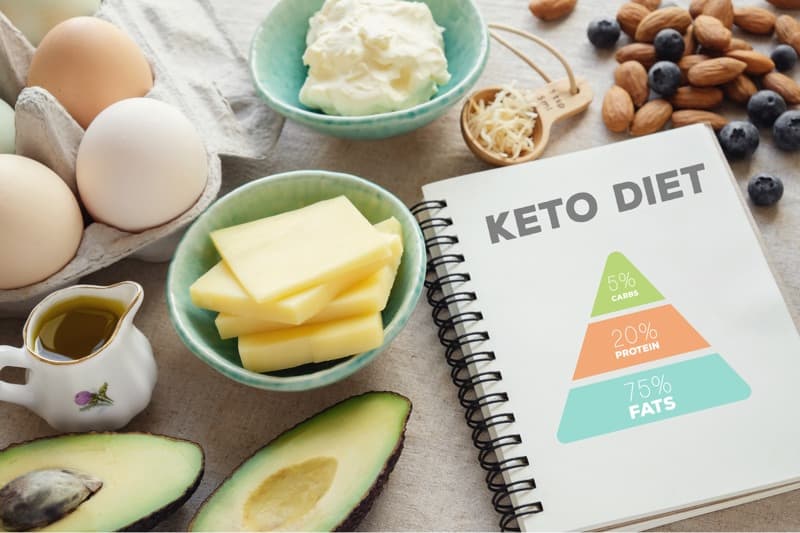What Is The Keto Diet All About?
What is the Keto Diet all about? The Keto Diet, short for ketogenic, switches the metabolism in the body to burning fat instead of burning sugars from carbohydrates. This metabolic switch is ketosis.
While every person’s needs are different for a variety of health and lifestyle reasons, a typical American diet will consist of 50% carbohydrates, 35% fat, and 15% protein. However, a person following a ketogenic diet will have a daily intake of 5-10% carbohydrates, 70-75% fat, and 20% protein. By keeping carbohydrate intake quite low, the process of ketosis is engaged and your body begins to burn fat stores as its source of energy.
It typically takes a few days to reach the state of ketosis. Once you achieve ketosis, you must maintain this ratio of macronutrient percentages in order to keep the body in a ketogenic state. If a high percentage of dietary fat is not maintained, the metabolism will switch back to the traditional source of energy: carbohydrates/sugars.

Fat as Fuel
Fat cells release fatty acids. In turn, these fats travel to the liver in the bloodstream. There, they break down and then convert to ketone bodies. The ketones then circulate back into the bloodstream where muscles and other tissues pick them up for the body to use just as it would glucose. The more dietary fat one consumes on a keto diet, the more fat that is stored to be accessed for fuel.
The Science of Keto
The keto diet, while recently growing in popularity, has been around for a while. A long-term study was conducted by Dr. Hussein Dashti in 2004 to determine the keto diet’s effect on obese patients. 83 patients with a BMI of 35+ were put on a ketogenic diet for 24 weeks. At the end of the study trial, the patients experienced a significant reduction in body weight and body mass index. In addition, HDL levels of cholesterol (the “good” cholesterol) significantly increased, while LDL (the “bad” cholesterol) decreased. In another survey led by Dr. Belinda Lennerz in 2018, researchers found a very low carbohydrate diet promotes “exceptional glycemic control” (AKA – blood sugar control). Furthermore, when there is low carbohydrate intake, you avoid spikes in blood sugar levels. This may lead to improved focus and concentration throughout the day.
Making the Shift to the Keto Diet
There are many ways to increase your dietary fat intake to put your body into a state of ketosis. But, it can be a big change and a bit overwhelming until you find out what you like and don’t like. Help is there with keto-friendly recipes. There are also a number of products that state they are keto diet friendly right on the label, which can be quite helpful. A few recommendations to start are:
- Adding grass-fed butter to your meals or incorporating a grass-fed butter powder into your smoothies or coffee. Garden of Life Butter Powder is one product to use.
- Trying MCT oil, or medium-chain triglycerides, naturally found in coconut oil. It is quick to digest, absorb, and convert into energy for the body and the brain.
- Blend oil with coffee to make Bulletproof Coffee or use it to make a salad dressing. Or, try adding MCT powder to a smoothie.
- Picking up some products labeled keto-friendly on their packages, like Catalina Crunch Keto Cookies or Sunwarrior Clean Keto Protein Peptides.
You can find all of these product recommendations and more in the Refrigerated, Grocery, and Supplement sections of Martindale’s Natural Market.
References:
Harvard Medical School, Should You Try the Keto Diet?
While the keto lifestyle works great for some, it may not be appropriate for everyone. As always, check with your physician or other healthcare providers if you are considering keto or before making any significant changes to your eating patterns.
These statements have not been evaluated by the FDA. They are not intended to treat, diagnose, cure or prevent any disease.
